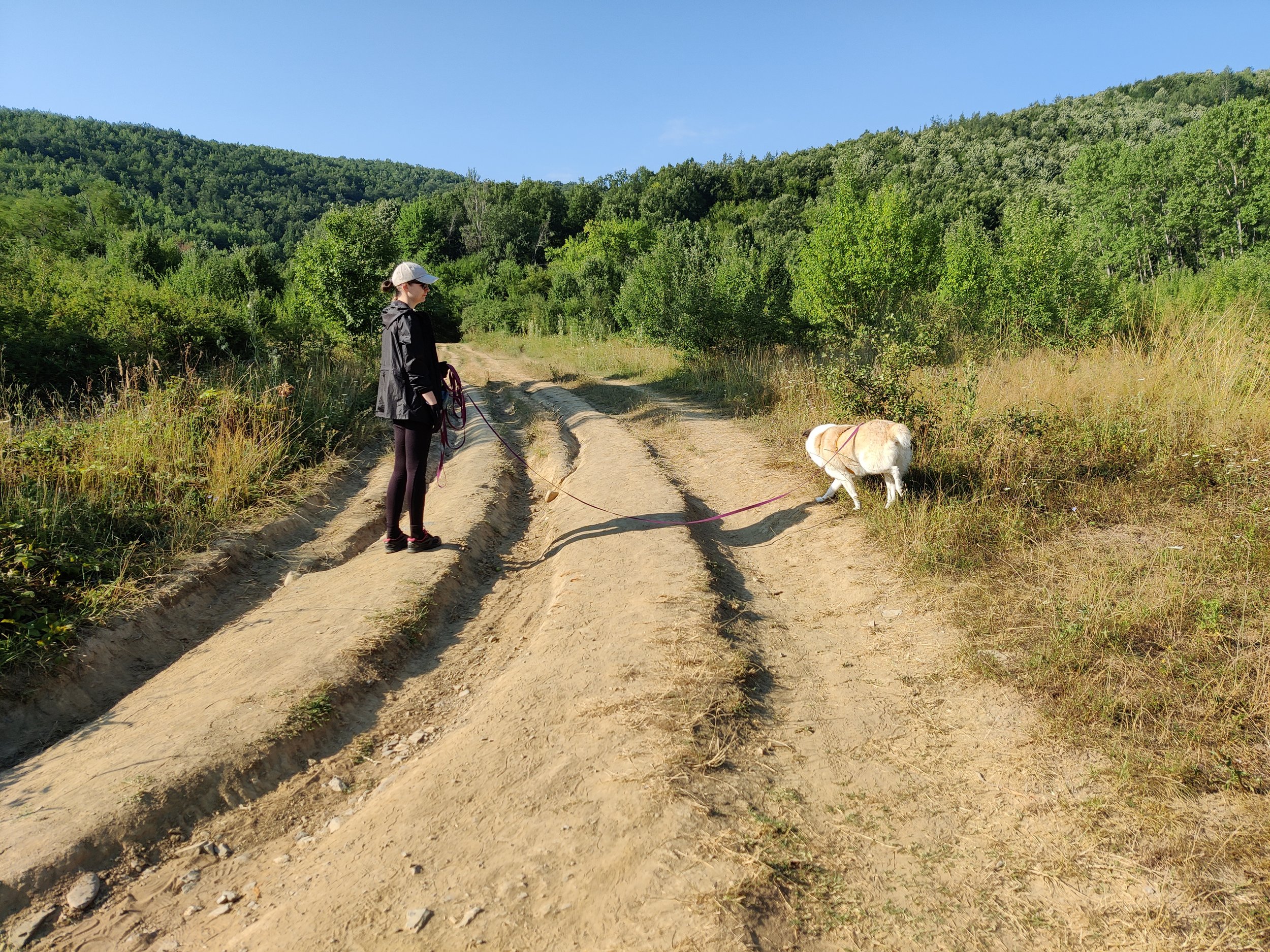Practicing Mindfulness
This article will be less about dogs and more about the mental health of us, humans and dog guardians.* Thankfully, mental health is being discussed more widely nowadays, especially in connection to the global COVID-19 pandemic and the toll it took on many of us.
We were not an exception, and today Lyubov from our team would like to share her personal experience and how Smiling Leash walks help her during these times.
Lyubov and Heidi on a walk
"Without going into much detail, the last year proved to be not an easy one for me. With a close family member passing and higher levels of social isolation, my anxiety started to affect my daily life on a much bigger scale than before.
Right now, thanks to therapy and the support of close friends and family, things are looking brighter. Another point of support for me was practicing mindfulness, and this is what I want to focus on today.
What is mindfulness? The Cambridge dictionary defines mindfulness as the practice of being aware of your body, mind, and feelings in the present moment, thought to create a feeling of calm.
Classic examples of practicing mindfulness are meditation, yoga, breathing techniques.
Practicing similar techniques can help us become more aware of our own emotions and thoughts, and help us manage them better. In fact, studies** have shown that mindfulness-based approaches can significantly reduce the symptoms of anxiety and depression.
I would like to share some personal thoughts about how we can practice mindfulness during smiling leash walks, and therefore, improve our mental health.
After having learned about practicing mindfulness from my therapist, I noticed that our daily walks with my dog Heidi had many elements of such techniques. I will now describe how practicing mindfulness is integrated in our walks in hope that my experience can be helpful to someone else.
We are usually walking during calmer times of the day in our sub-urban area, my dog Heidi is wearing a comfortable H-shaped harness that is clipped to a long 5-meter leash. We walk very slowly. I stop with her when Heidi chooses to sniff and investigate something. It's a very calm and relaxing 30-45 minutes walk. We visit the center of the village, a bus stop, several rubbish bins. Sometimes we go to a field or forest nearby. At the same time, there are a few challenging spots on our walks - places where we might meet a cat or get barked at by a dog in someone's garden.
While we are walking, I do not use my phone or listen to music. I pay a lot of attention to my own body: am I unintentionally tightening the leash? Am I walking too fast? Maybe I am forgetting to breathe and tensing my body? What I am communicating to my dog with my body?
All of these will be affecting the emotional state of my dog, too. If you want to learn how, you can read about it in our article:
➡https://www.smilingleash.com/blog/your-dog-is-watching-you
So while we are passing through one of those challenging spots, it's even more important for me to communicate calmness to Heidi with my own behavior. If I get tense, she likely will, too.
Thinking about my own actions, being mindful of my breath and body, observing Heidi's behavior and body language helps me to really stay present in the moment and feel the connection I have with my dog. It allows me to slow down and appreciate my own emotions to be able to process them in a healthy way.
So I discovered that to practice mindfulness I did not need much at all. Just myself, my dog, and a nice smiling leash walk."
We hope that Smiling Leash walks can be a moment of peace and quiet for you, too. 💛
*This post is not intended to be a substitute for professional advice. Always seek the advice of your mental health professional or other qualified health provider with any questions you may have regarding your condition.
**You may find more information about studies around practicing mindfulness in this article:
➡https://positivepsychology.com/mindfulness-brain-research-neuroscience/

